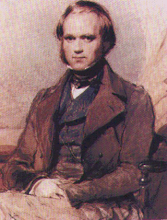
The atmosphere of the early Earth was probably lacking in oxygen, as oxygen atoms were likely bonded with hydrogen in water vapor rather than what is called “free oxygen” or 02, so the first lifeforms to appear were probably anaerobes, organisms that can live in the absence of oxygen.
The absence of free oxygen in the early Earth atmosphere also meant that there was no ozone—ozone is a molecule that is formed by linking three oxygen atoms (03), and it is an effective sun block, absorbing ultraviolet radiation from the sun.
In the absence of oxygen and an ozone layer, the first lifeforms must have been extremophiles, living under conditions inhospitable to life. But the fossil record suggests that life took a foothold on Earth just as soon as conditions permitted.
(to be continued)
The illustration shows non-extremophiles protected by the ozone layer of the modern Earth. That site also explains the importance of the ozone layer.
There are many links to sites about the composition of the early Earth atmosphere. Start here.


No comments:
Post a Comment